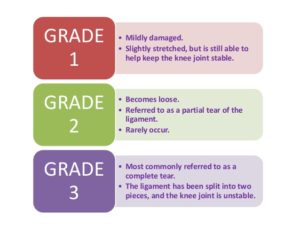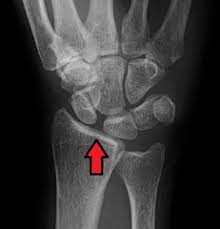Hand pain can be miserable. What are hand ligaments? How do you know if you tore a ligament in your hand? How do you check for ligament damage? How do you treat ligament Pain? What new treatment options exist for hand ligament pain. Let’s dig in.
What Are Hand Ligaments?
Our hands are critical to everything we do. The hand is composed of 27 bones which are kept together by ligaments. Ligaments are thick bands of connective tissue that connect one bone to another. They provide important stability. Ligaments are susceptible to injury which is called a sprain. Approximately 25% of all sports-related injuries involve the hand or wrist (1). Ligament injuries are graded from one to three based upon their severity.
Grade 1: Is a partial sprain without instability.
Grade 2: Intermediate sprain with partial thickness tear of the ligament
Grade 3: Complete tear of the ligament
There are numerous ligaments in the hand that provide mobility and stability to the hand. Two important hand ligaments that will be discussed in this blog are the ulnar collateral ligaments (UCL) of the thumb and the scapholunate ligament.
Ulnar Collateral Ligament of Thumb
Located on the inside of the thumb joint, the UCL is critical to the stability of the thumb and is one of the most common injuries to the hand (3). Incidence has been documented as high as 50 per 100,000 (4). Injury of the UCL commonly occurs with falling on an outstretched hand or when a ball or racket strikes the inside of the thumb. Ulnar collateral ligament injuries are common and seen in skiers, basketball, and football players (5)
Scapholunate Ligament
The scapholunate ligament connects the scaphoid bone to the lunate and provides important stability for the hand and wrist. Tears are commonly caused by falls or by sudden force on the wrist. It occurs in 5-64% of radius fractures (6). If left untreated it can lead to instability, pain, and arthritis.
Basal Joint Arthritis or CMC / Carpometacarpal Arthritis
The thumb is also referred to as the CMC joint. It is composed of two bones. The Carpal bone is denoted by the letter C. The second bone, the MC is the MetaCarpal bone. So your thumb is made up of the Carpal and MetaCarpal bones that come together and form a joint. The joint is lined with cartilage which allows the two bones to slide smoothly against one another. The thumb joint is held together by multiple thick ligaments. Ligaments are thick pieces of connective tissue that connect one bone to another. This joint is a saddle-shaped joint that experiences significant forces through activities of daily living.
Read More About Basal Joint Arthritis or CMC / Carpometacarpal ArthritisBone Spurs
Bone spurs, also known as osteophytes, are bony projections that develop along the edges of bones. They are most commonly found in joints — where bones meet — but can also appear on bones where tendons, ligaments, and muscles attach. Bone spurs are often associated with aging and are a common condition. While they can occur in any bone, they’re most often found in areas such as the spine, shoulders, hands, hips, knees, and feet. Bone spurs form as the result of the body trying to repair itself by building extra bone. This process can be triggered by several factors: Osteoarthritis: The most common…
Read More About Bone SpursCalcific Tendonitis
Calcific tendonitis, also known as calcifying tendonitis, is a condition characterized by the formation of calcium deposits in a tendon, most commonly in the rotator cuff tendons of the shoulder. These deposits are not due to injury or trauma but rather occur spontaneously. Tendons, the thick connective tissues that link muscles to bones, aren’t usually calcified. However, in calcific tendonitis, calcium builds up in these tissues, which can result in inflammation and severe pain. This condition tends to occur more commonly in adults between 30 and 60 years old, and it’s more prevalent in women than in men.
Read More About Calcific TendonitisWrist Tendonitis
Wrist tendonitis, also known as tenosynovitis, is a condition characterized by inflammation of the tendons surrounding the wrist joint. This inflammation typically results from repetitive stress, overuse, or injury, causing the tendons to become irritated and swollen. Common contributing factors include activities that involve repetitive wrist movements, such as typing, manual labor, or sports-related motions. Additionally, sudden increases in activity level or improper ergonomics may play a role in the development of wrist tendonitis. As the tendons become inflamed, they can rub against the…
Read More About Wrist TendonitisHow Do You Know if You Tore a Ligament in Your Hand?
Symptoms vary depending upon the severity of the injury. Common symptoms include localized pain, swelling, bruising, and decreased range of motion that occurs with trauma. If pain persists and the joint feels unstable or loose you may have torn a ligament. Hand ligament pain is important and if it persists warrants evaluation. If left untreated an injured hand ligament can lead to joint instability, additional injury, and the development of arthritis.
How Do You Check for Ligament Damage?
Physical examination is important in assessing ligament damage. Your hand will be put through different movements to determine stability and range of motion. Both hands should be examined Other tests may be recommended which include;
X-rays
Useful to identify fractures, dislocations, prior trauma, bone spurs, and arthritis
MRI Scan
A dedicated study using strong magnetic fields, magnetic field gradients, and radio waves that provides a detailed image of your bones, tendons, and ligaments in your hand. It can determine whether a ligament is partially or completely torn. It is performed without any movement and therefore is a static test.
Ultrasound
Ultrasound uses high-frequency sound waves to create detailed images of the bones, tendons, and ligaments. Most physicians refer patients to a hospital or imaging center for ultrasound studies. Unfortunately, this puts you at risk for viral infection. At the Centeno Schultz Clinic, ultrasound imaging is part of every new patient evaluation. Unlike an MRI, an ultrasound examination allows for the evaluation of a given joint under stress and movement mimicking real-life conditions. This is critical as it will determine the integrity of the ligaments and the stability of the joint.
How Do You Treat Ligament Pain?
Treatment depends upon the severity of the injury. Conservative care is always the first treatment of choice if possible. A complete rupture of a ligament with the two ends pulled apart like a rubber band that has snapped requires surgery.
Conservative care
Activity modification, splinting, physical therapy, and nonsteroidal anti-inflammatory medications
Injections
When conservative care fails, steroid injections are oftentimes recommended. While steroids are strong anti-inflammatory agents, they cause damage to ligaments and cartilage and can compromise your immune system (7). Steroids should be avoided.
Surgery
Various surgical options exist for hand ligament pain that has not responded to conservative care. The specific type of surgery will depend upon the severity of the tear, the stability of the joint, and the presence of cartilage damage.
Are there other options? Yes!
Precise Injections of PRP or Bone Marrow Concentrate
Grade 1 and 2 ligament injuries can be treated with precise ultrasound-guided injections of PRP and bone marrow concentrate. PRP is rich in growth factors that can increase the blood flow to the injured ligament and accelerate healing. Bone marrow concentrate contains many different types of your own body’s cells that can promote ligament healing and reorganization of the disrupted fibers. At the Centeno-Schultz Clinic, we are experts in the treatment of ligament hand ligament pain and injuries. The procedures are demanding and require advanced training. They can not be performed by your Primary Care Physician or orthopedic surgeon. Watch Dr. Pitts inject the thumb ligaments under precise ultrasound guidance, below.
There are three distinct phases for ligament healing, each with different characteristics and pain levels. To learn more about PRP and bone marrow-based ligament treatments please watch the video below.
In Conclusion
Ligaments are thick bands of connective tissue that connect one bone to another. They provide important stability. Ligament injuries are graded 1-3. Persistent hand pain, swelling, bruising, and decreased range of motion are suggestive of ligament tear. Ligament damage can be assessed during a physical examination and may require additional studies such as an x-ray, MRI, or ultrasound. Ultrasound is a dynamic study that assesses the ligament integrity and the stability of the joint. At the Centeno Schultz Clinic, this is the standard fo care and is performed at new patient evaluations. Treatment for hand ligament pain depends upon the severity of the injury and may include conservative care, injections, or surgery. Steroids should be avoided as they cause damage to the ligaments and joint cartilage. Precise ultrasound-guided injections of PRP and bone marrow concentrate are effective in the treatment of hand ligament injuries. They are performed in our max COVID-19 protected clinic to minimize the risk of viral injection. Hand ligament pain is a warning sign that an injury has occurred and if left untreated can result in additional injuries, instability, and the onset of arthritis. Don’t let a hand ligament injury compromise your potential, and your future. Schedule a Telemedicine consult to learn more about your hand ligament pain.
1.Rettig AC. Athletic injuries of the wrist and hand. Part I: traumatic injuries of the wrist. Am J Sports Med. 2003;31(6):1038-48.
2.Makhmalbaf H, Shahpari O. Medial Collateral Ligament Injury; A New Classification Based on MRI and Clinical Findings. A Guide for Patient Selection and Early Surgical Intervention. Arch Bone Jt Surg. 2018;6(1):3-7.
3.Management of thumb metacarpophalangeal ulnar collateral ligament injuries. Rhee PC, Jones DB, Kakar SJ Bone Joint Surg Am. 2012 Nov 7; 94(21):2005-12.
4.Keramidas E, Miller G. Adult hand injuries on artificial ski slopes. Ann Plast Surg. 2005;55(4):357-8.
5.Management of thumb metacarpophalangeal ulnar collateral ligament injuries. Rhee PC, Jones DB, Kakar SJ Bone Joint Surg Am. 2012 Nov 7; 94(21):2005-12.
6.Intercarpal ligament injuries associated with fractures of the distal part of the radius. Forward DP, Lindau TR, Melsom DS. J Bone Joint Surg Am. 2007 Nov; 89(11):2334-40.
- Wernecke C, Braun HJ, Dragoo JL. The Effect of Intra-articular Corticosteroids on Articular Cartilage: A Systematic Review. Orthop J Sports Med. 2015;3(5):2325967115581163.


